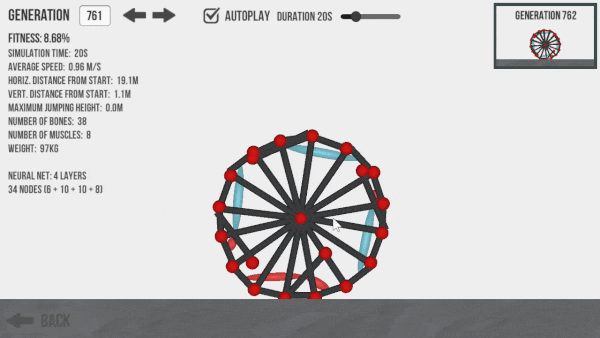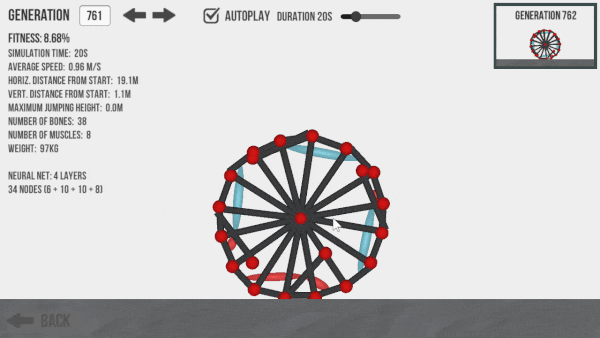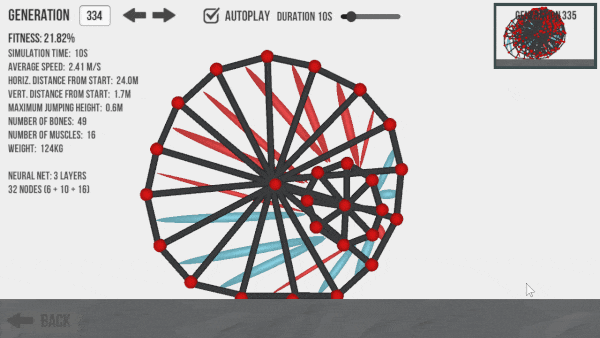Yeah. I found that input list shortly after posting this. I'm wondering if somehow that average bone rotation is resulting in a static rotation value on a creature like this. Depending on how the rotation of a single bone is determined, it seems like a wheel's average may just cancel itself out. If that's the case, then:
- distance from the ground is always the same
- current velocity has no direct correlation to current rotation, and may actually cause more harm than good
- rotational velocity has the same problems as current velocity
- number of points touching will always be the same
And we end up with no usable inputs.
It would be cool if there was an input list to select from, so that we could fine tune the creature's "senses", including multiple variants on rotation input, or even tying some of the inputs to a property of a specific bone or muscle.
sintrinsic
3
Posts
A member registered Feb 21, 2019
Recent community posts
Any single wheel based creature that I've attempted to create seems to be incapable of training effectively. Looking over the inputs in the help section, I see that rotation and rotational velocity are both inputs, but that rotation is the average of all bone rotations. This creature seems like it would be very easy to train if the rotation input was present at all, so is it possible that the way rotation is averaged with a wheel is averaging out to zero all the time?

The pendulum method will either learn to bounce, or rotate for a few seconds before coming to a stop.
I wonder what inputs the network is using. Are velocity and rotation being used as input?



